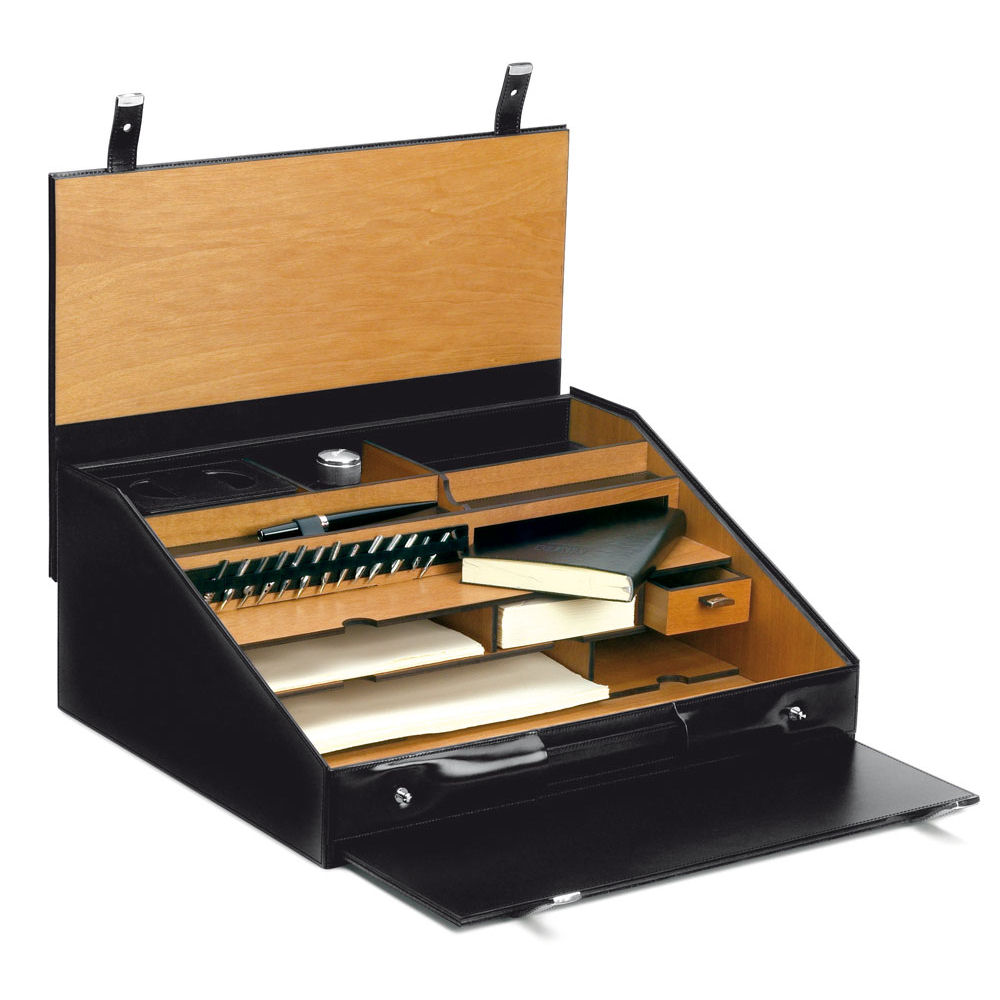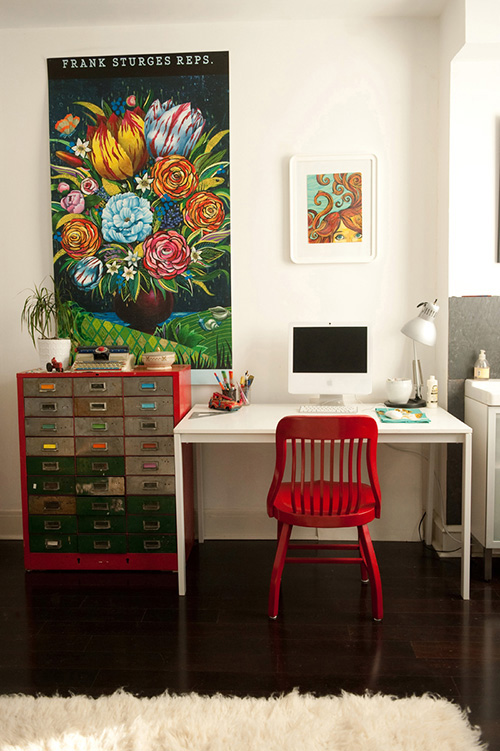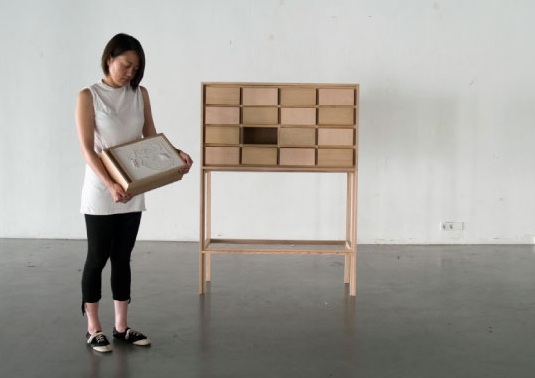
Writing about traveling bookcases and other dead media storage solutions got me thinking about other furniture that always seems pregnant with possibilities, yet just isn’t practical anymore: secretary desks, and travel desks.
I love all the cubby holes in the secretary desks. Holes full of letters, bills, and checks. Drawers containing pens, ink wells, and seals. All of it lockable. Its very structure conveys, “Important stuff happens here.” Need to do serious work on the go? Get a travel desk, the attache case’s awkward cousin.
While tasks like answering correspondence and paying bills have remained, the form they have taken has changed. No longer are we physically shuffling atoms around, but rather simply information. Email, online banking, and all the rest has replaced paper. Similarly, we no longer need travel desks, as our laptop contains everything that the desk, could and much more. Add a network connection, and almost nothing is out of reach. It seems increasing clear that physical media is dying. Newspaper circulation is down. CD sales have fallen. DVD and bluray are now seen as a transition technology as streaming is becoming increasingly widespread. (Thus Netflix’s price hike.) With the advent of eReaders and tablet computers, even the books and magazines seems in danger.

We’re losing the need to deal with physical items, and as a side effect, it seems like we’re losing an ability to signal our tastes; which is ironic, given how personalization and sharing has taken over the web. When visiting someone’s home, we would occupy ourselves by perusing each other’s bookshelves. The books, CDs, and DVDs were essentially the tag clouds of the physical world. They weren’t there just for storage, but also to signal our personality. Our collections not only express how we see ourselves, but also how we want others to see us.
Continue reading →







